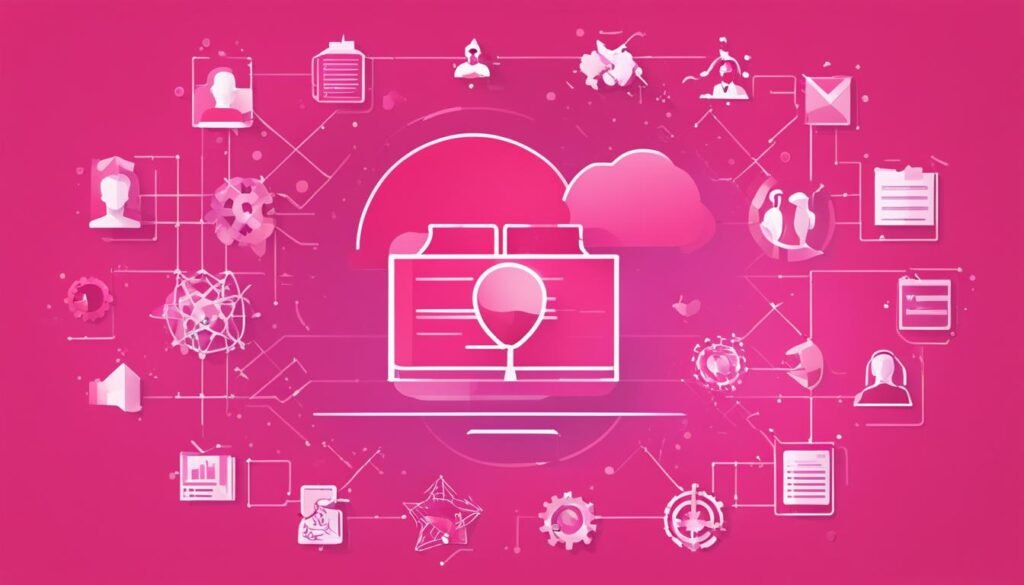Drive: The Surprising Truth About What Motivates Us by Daniel H. Pink
December 3, 2023 | by businessbooksmarts.com

What truly motivates us? For decades, researchers and experts believed that the key to motivation lies in external factors such as money, rewards, and punishment. However, in his book “Drive: The Surprising Truth About What Motivates Us,” author Daniel H. Pink challenges these traditional notions and presents a groundbreaking new perspective on what drives human behavior.
Pink asserts that while external rewards can provide a short-term boost in motivation, they do little to sustain it over time. Instead, he argues that three intrinsic elements – autonomy, mastery, and purpose – are the true drivers of motivation in the modern workforce.
In this article, we will explore Pink’s surprising findings about motivation and how they can be applied to various aspects of life, including leadership and employee engagement. We will also discuss practical strategies for motivating yourself and others, and the importance of creating a culture of engagement in the workplace.
Key Takeaways:
- Money, rewards, and punishment are not the key drivers of motivation.
- Intrinsic elements such as autonomy, mastery, and purpose are the true drivers of motivation.
- Creating a culture of engagement is essential for motivating employees.
- Leaders can use various strategies to inspire and motivate their teams.
- Individuals can use practical tips to motivate themselves and others.
Understanding Motivation and Psychology
At the heart of our actions, decisions, and behaviors lies the concept of motivation. It is the driving force that compels us to act and achieve our goals. Without motivation, we would lack the energy and willpower to pursue our dreams and aspirations. But what exactly is motivation, and what are the psychological factors that influence it?
At its core, motivation is the process by which individuals initiate, direct, and sustain goal-oriented behavior. It is the internal driving force that leads us to take action, persist in the face of challenges, and strive for excellence.
“Motivation is the art of getting people to do what you want them to do because they want to do it.” – Dwight D. Eisenhower
Psychologists have long been interested in understanding motivation and the factors that influence it. Early theories of motivation, such as Maslow’s hierarchy of needs and Herzberg’s two-factor theory, focused on the role of basic needs, such as safety, love, and esteem, in driving human behavior.
More recent research, however, has revealed that motivation is a much more complex and dynamic phenomenon, shaped by a variety of internal and external factors. According to the self-determination theory, for example, individuals are motivated when they feel competent, autonomous, and connected to others.
Other theories, such as the goal-setting theory and the expectancy theory, emphasize the importance of setting meaningful goals and having a clear understanding of the rewards and consequences that follow from our actions.
Overall, the study of motivation and psychology has come a long way since its early days. Today, researchers continue to explore the complex and multifaceted nature of motivation, shedding new light on the factors that drive us to succeed and excel in our personal and professional lives.
Leadership and Motivational Strategies
Leadership plays a critical role in motivating individuals and teams. To inspire and motivate employees, leaders should adopt a range of effective motivational strategies. One such strategy is to provide employees with opportunities for growth and development. This could involve offering training and development programs or assigning new and challenging tasks that allow employees to learn and apply new skills.
Another motivational strategy that leaders can use is to challenge employees with ambitious goals. By setting high expectations, leaders can encourage their employees to push themselves to achieve more than they initially believed possible. This can lead to a sense of accomplishment and satisfaction, promoting long-term motivation and engagement.
Recognition and rewards are also powerful motivators. Leaders should acknowledge and appreciate employees’ contributions, whether through financial rewards, incentives, or verbal recognition. This reinforces positive behaviors and encourages employees to continue performing at a high level.
Leading by Example
Effective leadership is not just about implementing motivational strategies; it’s also about leading by example. Leaders who embody the qualities they seek in their employees can inspire and motivate their team through their words and actions. Leaders who are transparent, authentic, and committed to their values and goals can build trust and create a strong sense of purpose in their team.
Leaders should also encourage open communication and collaboration among employees. This can promote a sense of belonging and ownership, leading to higher levels of motivation and engagement. Leaders who enable their employees to work together to achieve shared goals can create a positive and productive workplace culture.
Exploring Pink Books
If you’re intrigued by the findings presented in “Drive: The Surprising Truth About What Motivates Us,” you’ll be pleased to know that author Daniel H. Pink has written several other books that dive deeper into the subject of motivation. Let’s take a look at some of his other works:
To Sell is Human: The Surprising Truth About Moving Others
In this book, Pink explores the idea that we are all in sales, whether we realize it or not. He argues that we spend a significant portion of our time persuading others, whether it’s convincing a customer to buy a product or persuading a colleague to see things our way. Through anecdotes, research, and practical strategies, Pink provides insights into the art of selling and how to do it successfully.
When: The Scientific Secrets of Perfect Timing
In “When,” Pink examines the impact of timing on our lives and how it affects our decision-making, productivity, and overall well-being. He draws on a range of research, including studies on circadian rhythms and chronobiology, to provide insights into how to make the most of our time and optimize our performance.
“Timing is everything. But we don’t know much about timing itself.”
A Whole New Mind: Why Right-Brainers Will Rule the Future
In this book, Pink argues that as the economy shifts towards creativity and innovation, right-brain thinking will become increasingly valuable. He challenges the traditional notion that analytical left-brain thinking is what leads to success and provides evidence for the importance of skills such as empathy, creativity, and design.
Drive: The Surprising Truth About What Motivates Us (Young Readers Edition)
Pink also offers a version of his original “Drive” book, adapted for young readers. It presents the same ideas and concepts in a more accessible way for kids, helping them understand what motivates them and others around them.
These books complement “Drive” and help further the understanding of motivation in different contexts. Whether you’re a business leader, educator, or simply interested in personal growth, Pink’s books offer valuable insights and practical strategies for unlocking motivation and achieving success.

Applying Motivational Strategies in the Workplace
In order to create a successful and thriving workplace, it is essential to focus on employee engagement and motivation. Motivated employees are more productive, satisfied, and committed to their work, which ultimately benefits the organization as a whole. Here are some effective motivational strategies that can be applied in the workplace:
1. Offer Recognition and Rewards
One of the most effective ways to motivate employees is by recognizing and rewarding their contributions and achievements. This could include anything from a simple verbal recognition to a more formal reward program. By acknowledging employees’ hard work and dedication, organizations can create a culture of appreciation and boost employee morale.
2. Encourage Career Development
Employees are more likely to be motivated when they feel that there are opportunities for growth and development within the organization. Encouraging career development through training programs, mentoring, and other learning opportunities can help employees feel valued and invested in their work.
3. Foster a Positive Work Environment
A positive work environment where employees feel supported and valued can go a long way in fostering motivation and engagement. This could include anything from creating a comfortable workspace to promoting work-life balance and encouraging open communication.
4. Provide Opportunities for Autonomy
Giving employees autonomy over their work can help them feel more motivated and engaged, as it allows them to take ownership of their projects and work independently. This could include giving employees more control over their work schedule, allowing them to work remotely, or providing opportunities for self-directed projects.
By implementing these motivational strategies, organizations can create an environment that fosters employee engagement and motivation, leading to increased productivity and success.
The Surprising Truth About Motivation
According to Daniel H. Pink’s book, Drive: The Surprising Truth About What Motivates Us, traditional views on motivation may be misguided. The book challenges the idea that external rewards, such as money or praise, are the primary motivators for humans. Instead, Pink proposes that intrinsic motivation, or the internal desire to do something for its own sake, is the key driver of great work.
Studies have shown that intrinsic motivation leads to higher levels of creativity, engagement, and productivity. In fact, extrinsic motivators can actually hinder performance by creating a “carrot and stick” approach, where individuals only perform for the reward and lose interest in the task itself.
“The problem with making an extrinsic reward the only destination that matters is that some people will choose the quickest route there, even if it means taking the low road. Indeed, most of the scandals and misbehavior that have seemed endemic to modern life involve shortcuts.”
The book highlights three key elements that drive intrinsic motivation: autonomy, mastery, and purpose. Autonomy refers to the desire to have control over one’s work and the freedom to make decisions. Mastery is the drive to improve and develop skills. Purpose is the desire to do something meaningful and contribute to something larger than oneself.

Applying this framework to the workplace, organizations can foster a culture of motivation by providing employees with autonomy, opportunities for skill-building and development, and a sense of purpose in the work they do. By tapping into the intrinsic motivation of employees, organizations can create a more engaged and productive workforce.
Takeaway
The surprising truth about motivation is that it’s not about external rewards, but rather intrinsic motivation. Autonomy, mastery, and purpose are the key drivers of great work. By creating an environment that supports these elements, organizations can foster a culture of motivation and engagement.
Employee Engagement and Motivation
Employee engagement is an essential component of driving motivation in the workplace.
According to a study by Gallup, engaged employees are 21% more productive than those who are not engaged. It’s clear that creating a culture of engagement is crucial for organizations that want to maximize their employees’ potential and drive motivation.
One of the key factors in employee engagement is a sense of purpose. When employees feel that their work is meaningful and contributes to a larger goal, they are more committed, productive, and motivated.
Organizations can foster this sense of purpose by aligning their mission, vision, and values with their employees’ work. This can be done by communicating these values clearly and consistently and by providing opportunities for employees to see the impact of their work.
Recognition and feedback are also critical components of employee engagement. Employees who feel valued and appreciated for their contributions are more likely to be motivated and engaged. Organizations can facilitate this by providing regular feedback and recognition, both formally and informally.
Finally, providing opportunities for growth and development is essential for employee motivation. When employees feel that they have opportunities to learn and develop their skills, they are more engaged and invested in their work. Organizations can offer training, mentorship, and career development programs to support their employees’ growth.
By prioritizing employee engagement, organizations can create a culture of motivation and drive that leads to increased productivity, innovation, and success.
Strategies for Motivating Yourself and Others
When it comes to motivation, one of the most important things to remember is that it starts from within. Whether you’re trying to motivate yourself or others, it’s essential to understand the underlying drivers of behavior and how they can be influenced. Here are some strategies to consider:
Set clear goals
One of the most effective ways to motivate yourself and others is to set clear, achievable goals. Make sure these goals are specific, measurable, and time-bound. This will help to create a sense of purpose and direction, making it easier to stay focused and motivated.
Provide feedback and recognition
Feedback and recognition play a crucial role in motivating individuals. Make sure to provide feedback regularly, both positive and constructive, and recognize achievements along the way. This will help to build confidence and reinforce desired behavior.
“Feedback is the breakfast of champions.” – Ken Blanchard
Create a supportive environment
A supportive environment can make all the difference in motivation levels. As a leader, make sure to provide the necessary resources and support to help individuals succeed. Encourage teamwork, collaboration, and open communication to foster a positive and productive work environment.
Focus on intrinsic motivation
Intrinsic motivation, or motivation that comes from within, is a powerful driver of behavior. Encourage individuals to find meaning and purpose in their work by highlighting the impact it has on others. Create opportunities for autonomy, mastery, and purpose to help individuals find intrinsic motivation in their work.
Take care of yourself
Finally, it’s important to remember that motivation starts with self-care. Make sure to take care of yourself physically, emotionally, and mentally. Prioritize exercise, adequate sleep, and healthy eating habits to help manage stress and increase energy levels.
By implementing these strategies, you can motivate yourself and others to achieve their goals and reach their full potential.
Conclusion:
In conclusion, “Drive: The Surprising Truth About What Motivates Us” by Daniel H. Pink offers eye-opening insights into the true drivers of motivation. It challenges traditional notions of what motivates us and emphasizes the importance of intrinsic motivation and employee engagement. By understanding these concepts, individuals and organizations can create a culture of motivation and productivity.
It is essential to apply the insights gained from this book to our personal and professional lives. By adopting motivational strategies, we can empower ourselves and others to achieve our goals and realize our full potential. Through this process, we can create a better future for ourselves and those around us.
Therefore, we encourage everyone to explore the surprising truth about motivation and apply the lessons learned from this book. By doing so, we can unlock the potential for growth and success in all aspects of our lives.
RELATED POSTS
View all


